Adult learners learn differently from school or college-going students. Many of them also face several challenges when it comes to learning and continuing education. Adult learning theory (ALT) aims to help overcome them by understanding how they prefer to learn.
For example, learners in their mid or late 40s may become affected by self-doubt about their learning capacity.
Questions like “Am I not too old to learn?” and “Can I make it to the end?” often discourage them from pursuing learning.
Also, a lack of learning materials and tools tailored to their unique learning needs can be a bottleneck to learning. This is true both inside and outside a workplace. Understanding the theory can help you deliver suitable training programs to your employees and get the best results.
After reading this post, you’ll discover what adult learning theory is, the challenges adult learners face, the role of instructional designers in creating materials for adult learners, and finally, how a learning management system (LMS) can help you implement the theory.
Let’s dive right in.
What Is Adult Learning Theory?
Adult learning theory, or andragogy, is a theory developed by adult educator Malcolm Knowles in 1968.The theory examines how adults learn and how it differs from how children learn. It demonstrates how adult learning is unique and identifies different learning styles that suit them best.
Over the years, the theory has changed, but it contains some assumptions and principles at its core.
You can apply this theory to workplace learning as it deals with how adult professionals learn in a given situation.
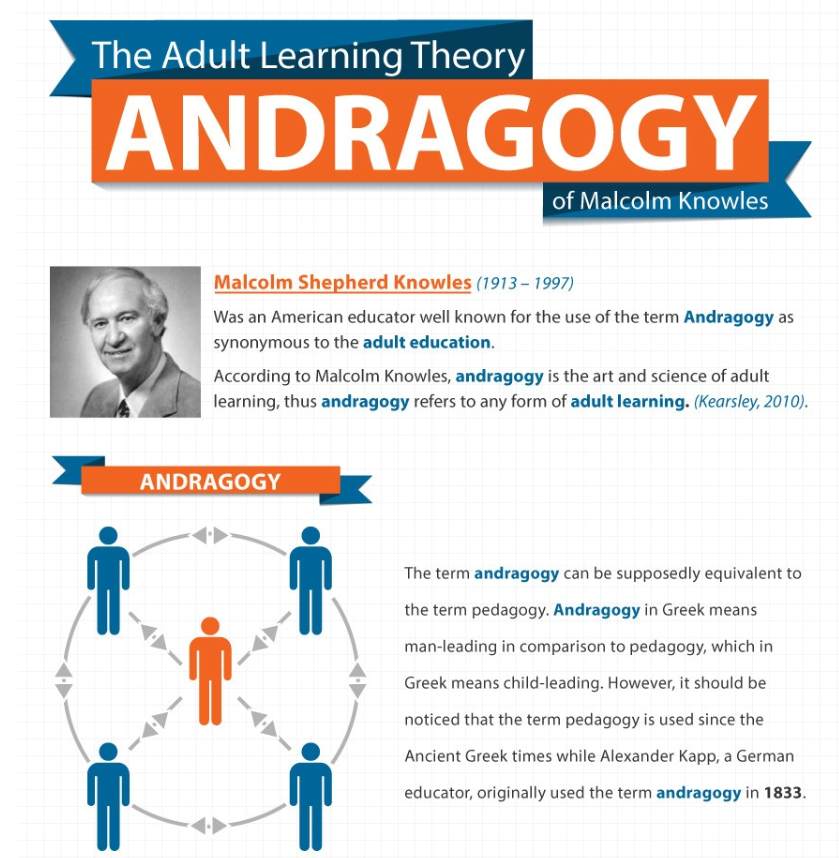
Why Is Adult Learning Theory Important?
Malcolm Knowles’ theory is considered one of the earliest theories to highlight the distinctive adult learning patterns and the importance of adult education. In other words, it was the first adult education theory that explains how adults learn differently from children.
Understanding the theory can help you train your employees better and more effectively. As the science behind adult learning, it gives you a direction to how you design learning materials and systems and educate them.
The theory makes employee training and education more efficient by helping you put resources to better uses and yield business ROI.
Watch: What is eLearning and How Can It Help You?
5 Pillars of Adult Learning Theory
In the early 1980s, Malcolm Knowles came up with his five assumptions about adult learning. They form the pillars of his theory based upon which he developed his ALT principles. These pillars generally talk about how adults perceive learning and how they prefer to learn.
1. Self-Concept
This is one of the main pillars of adult learning theory.
Adult learners prefer to learn independently. This is unlike children who depend on teachers and parents to master their lessons.
As we grow older, we shift from being dependent and instructor-led learners to ones who take a self-directed approach. So, rather than depending on others to acquire knowledge, adult learners take the initiative themselves to learn something new.
2. Adult Learner Experience
The next pillar, adult learner experience, says that adults draw from their personal experiences. This is contrary to what children do. Children learn mostly by observing others and have little to no experience to draw on while learning.
That’s why learning in the case of experienced adults occurs more naturally. They take references from their experiences and learn intuitively.
3. Readiness to Learn
Adults are ready or willing to learn only when there is a good reason or relevance. For example, they tend to learn when it’s driven toward work-related knowledge and skill development.
This theory is true for both personal and professional learning situations. In their personal life, new parents learn to take care of their newborns as it’s a necessity in their new roles as parents, unlike singles.
4. Orientation of Learning
Adults want their knowledge to apply to everyday lives. For them, it’s not just some aimless learning about a subject. In other words, they are more after practical skills that can help them solve life’s present problems.
In this sense, it’s problem-based learning, not subject-based learning, as in the case of young learners.
5. Motivation to Learn
Generally, children learn because of external factors such as teachers and parents who tell them why they should go to school, read a book, or do their homework.
Unlike this, adults learn for intrinsic reasons such as personal development or career progress.
So, they are driven by a different set of motivations.
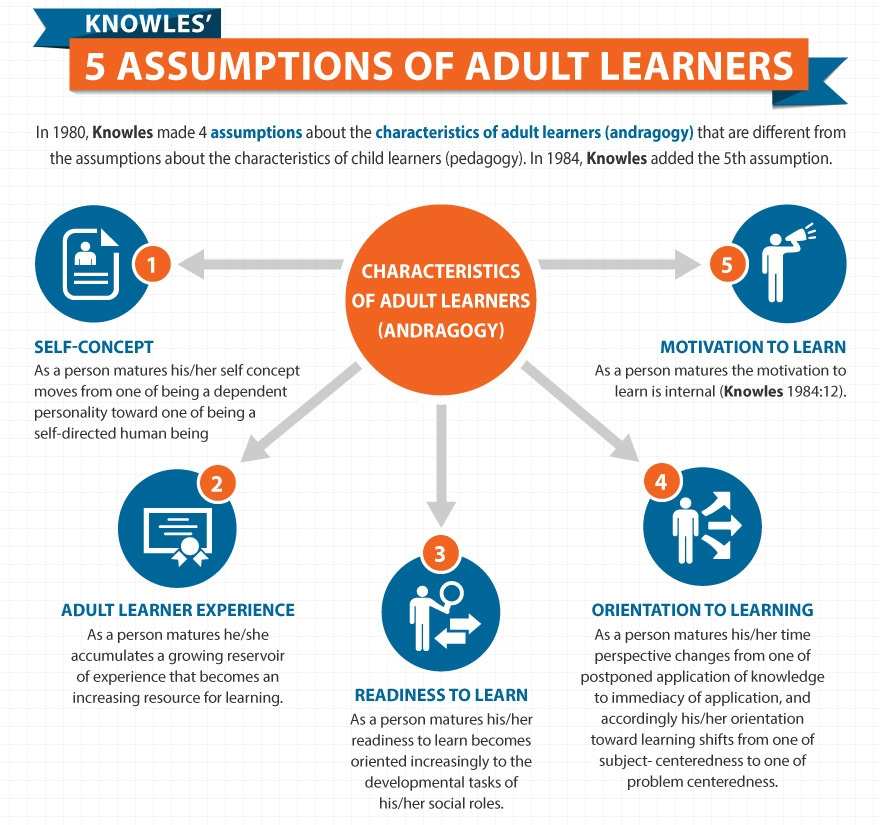
4 Principles of Andragogy Theory
Malcolm Knowles developed four principles of adult learning right around the time he introduced the five pillars. These four principles are:
- Adults want to participate in planning, delivering, and executing their educational or training programs. They want to have a say in what, when, and how they learn.
- Adults prefer to connect their learning to their past experiences — both good and bad. They want to draw on what they already know to shape their present and future learning.
- They like to consume information to solve personal and professional challenges. So, it should be relevant to their life and job.
- For adults, learning is not subject-oriented but problem-oriented. Every information they take in should be practical and applicable.
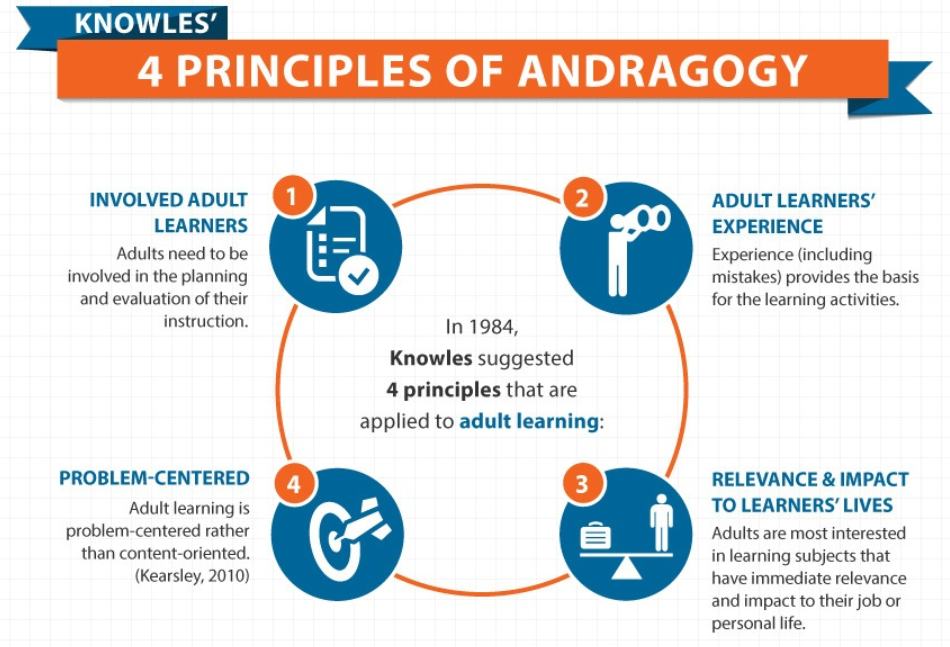
Now that you know about adult learning theory and its principles let’s understand what instructional designers have got to do with them.
Get Free eLearning Authoring Software — All Features, Forever.
We've helped 567 companies train 200,000+ employees. Create courses in under a minute with our AI LMS or use 200+ ready-made courses on compliance, harassment, DEI, onboarding, and more!
Why Instructional Designers Need to Know the Adult Learning Theory
Educationists build school curriculums around how students prefer to learn and how they should learn. Adult learning should work more or less along the same lines for the best results.
Instructional designers are responsible for developing engaging learning content. For this, they first identify their audience’s learning needs, set learning goals, and create materials around those objectives.
To develop the best educational or training content for adults, instructional designers must first familiarize themselves with various principles, approaches, and methods. This includes the adult learning theory.
This theory is an essential component in the modern learning system for adults. Many instructional designers use it as the starting point for developing practical and engaging learning opportunities for adults in a corporate setting.
Adult learning theory provides a framework to instructional designers for creating such learning opportunities.
4 Challenges of Adult Learners
As already hinted above, adult learners face numerous learning challenges. These issues are common whether adults pursue personal development programs or workplace training. Let’s look at some of the main ones.
1. Paucity of Time
A lack of time affects most adult learners. They need to attend to family responsibilities and maintain a work/life balance. So, whatever learning happens, it happens at work alongside their daily responsibilities. There is little to no learning happening outside the workplace.
2. Diffident Mindset
Self-doubt or anxiety about the capacity to learn is another barrier to learning for adults. They often think that they should have figured it out when they were young. The back-to-school feeling seems like a backward step to them.
This and the fear of failure deter them from going all out with learning.
3. Lack of Flexibility in Schedule
With many commitments, adults need a flexible schedule where they can juggle learning and other important tasks. But this is easier said than done. A large chunk of their work hours goes to performing their daily official duties. This leaves no room where they can fit in training or self-study.
4. Resistance to Change
Most adults have established notions about work and life shaped by their experiences. That’s why they often feel reluctant to accept new ideas.
Aging can also be a factor in learning since adults tend to learn less efficiently with increasing age.
That said, the depth of learning and the ability to apply the knowledge acquired also increases with age.
How an LMS Can Help Implement Adult Learning Theory
In your effort to train your senior workforce, you would need the right learning materials and the right approaches for maximum impact. Along with this, you would certainly require a platform to manage their education and training.
Here, a robust and versatile SaaS LMS can be a good choice for continuing education.
Once you identify your audience’s learning needs, you can use these tools to develop training strategies that align with your overall learning objectives.
A cloud LMS such as ProProfs Training Maker can help you create, manage, share, and track online courses (more on this later) and tests from one place.
Let’s see how you can do so.
Course Creation
Most LMS software systems provide an authoring tool to help users create courses from scratch. They also provide a catalog of ready-to-use courses on different in-demand topics for a quick start. These resources are usually designed by industry experts and fully customizable.
You can also upload training materials you already have, such as docs, videos, presentations, recorded webinars, podcasts, and PDF files.
Create learner groups based on their job roles, departments, or locations and easily share these courses with them via emails, as a link to the classroom housing those courses, or directly embed them on your company website.
Watch: How to Create Employee Training Courses Online
Learning Paths
We have already looked at how adult learners see their upskilling opportunities. They tie them to their past experiences and how new knowledge and skills will help them overcome their personal and professional challenges.
Here, LMS-driven learning paths can give them a fair idea of what they will be learning and how. Each module in the learning path communicates beforehand the learning objectives and what learners will be able to do at the end of each module.
You can assign a learning path based on each learner’s present skills and gaps. Such personalizations will make learning more fulfilling. They also give visibility to the route adult learners will take and why.
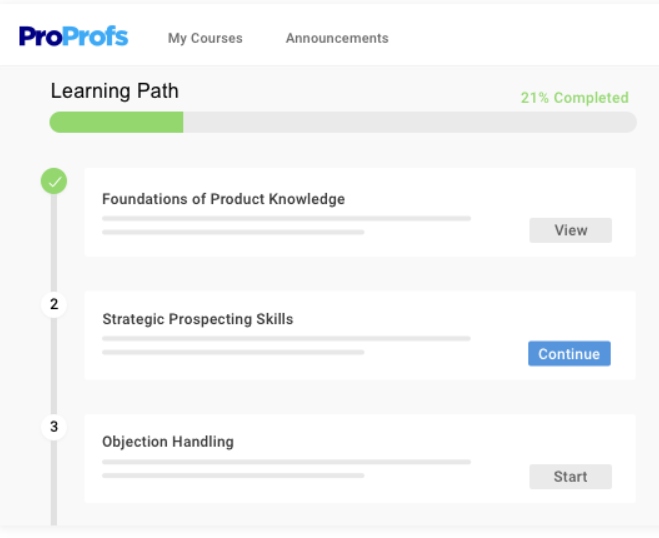
Quizzes
Apart from being an assessment tool, quizzes make learning engaging and improve concentration. Best of all, everybody loves them, including adults.
All this provides a good reason to participate in learning wholeheartedly and complete courses on time.
ProProfs’ quiz-making tool Quiz Maker provides a library of skill-based assessments, different question types, multiple quiz formats, and an option for video responses. You can use them to evaluate your learners before, during, and after a training program.
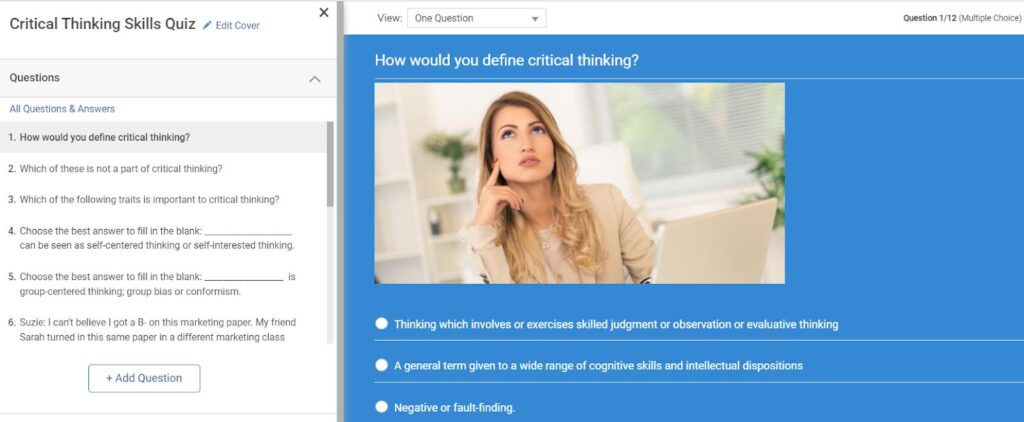
Gamification
Gamified learning makes learning interactive and engaging. It also fosters healthy competition between learners.
An LMS with gamification features, such as badges, leaderboards, quizzes, brain games, points, flashcards, and certificates, ignites learners’ internal and external motivations. It makes learning less mundane and mechanical.
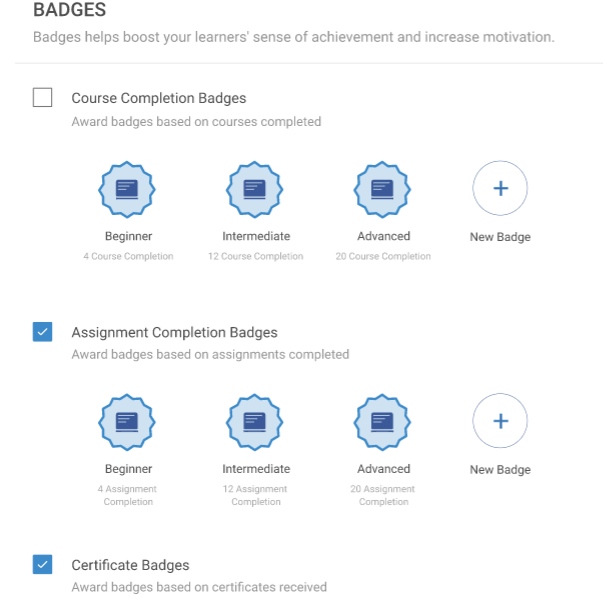
Game elements like this turn learning into a stimulating, fun, and habit-forming experience. Again, they ensure a higher training participation and completion rate.
Learning in the Moment of Need
Like their younger counterparts, adult learners should be able to learn as and when they need it. It may be in the flow of work or at their leisure.
An LMS with a mobile version can help you provide information and tips to learners on production floors while they are out in the field, while commuting, or at home.
Watch: What Is a Mobile LMS & How Can It Help Train Anytime, Anywhere?
This provides an uninterrupted, contextual, and seamless experience to adult learners. Limiting learning to classroom teaching and a specified time frame doesn’t help them. It will cram their minds and training will take longer to complete, frustrating the participants.
Also, since most of these platforms are cloud-based, learners can access them from anywhere and at any time using the devices they use daily.
Multilingual Support
Not all adult learners are polyglots; many of them don’t know any language other than their mother tongue.
An LMS with support for multiple interface languages can remove the chances of language becoming a barrier to learning. For example, ProProfs Training Maker supports English, Spanish, and 70+ other languages.
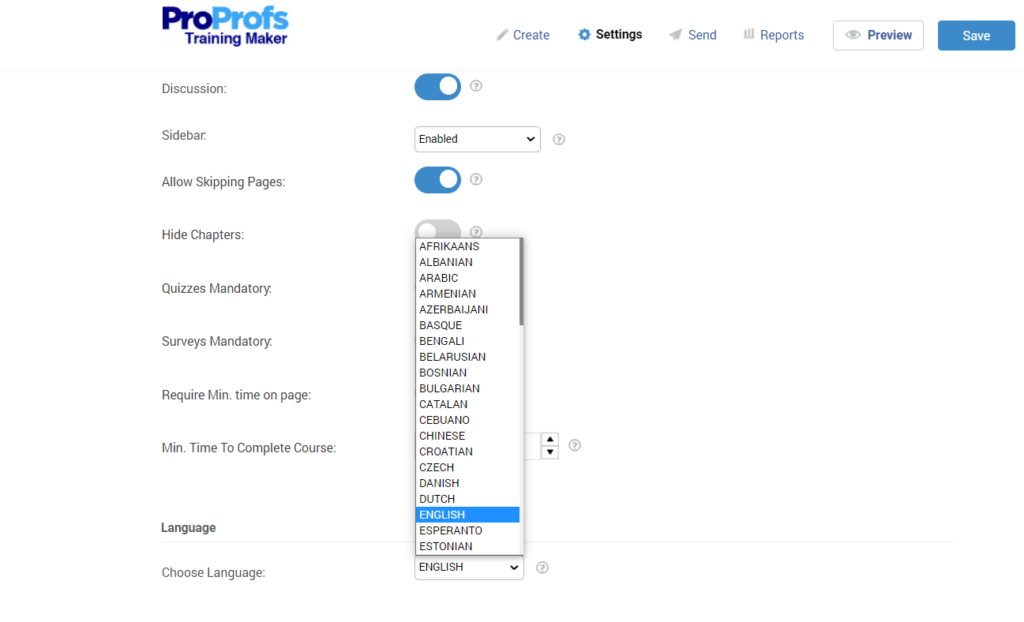
This feature enables you to train adult learners in any linguistic region, adding a touch of personalization. It also makes learning more efficient and faster since familiarity with a language improves cognitive ability.
Here’s a case study on how AYC leveraged ProProfs’ multilingual feature to empower workshop participants:
Suggested Online Courses for Adult Training Programs
As a key element in employee training software, online courses sharpen skills and help adults grow professionally through additional qualifications. They keep learners informed, increase their proficiencies, and add to their experience.
The courses you choose to train adult learners should match their learning needs. They should also inspire participants to learn. Moreover, the courses should include real-life and applicable examples.
Let’s now see some such courses that you can use.
Communication Skills
Communication skills have always been an in-demand competency. Regardless of job roles and age, employees are expected to exhibit excellent communication skills. This helps teams and organizations communicate clearly and effectively and enables them to get things done on time.
These communication training courses can help your adult learners pick the skills to work in teams, forge meaningful relationships, and advance their careers.
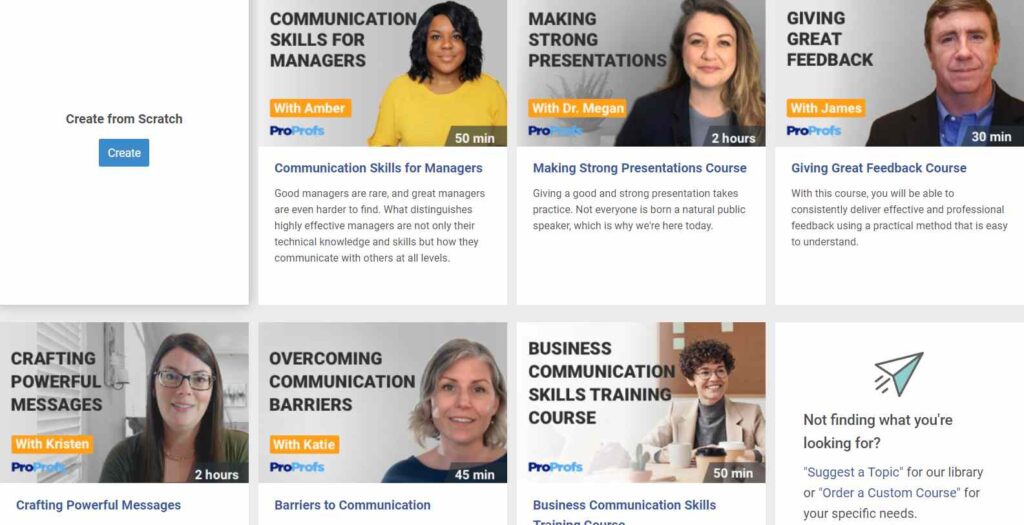
Leadership & Management
Adults on the verge of a leadership role or new to it will find these courses helpful. They can learn how to build successful teams, win their trust, exercise influence, and keep them motivated.
You can groom your learners to become tomorrow’s leaders using these purpose-built courses. They focus on the core leadership qualities organizations want to see in their employees.
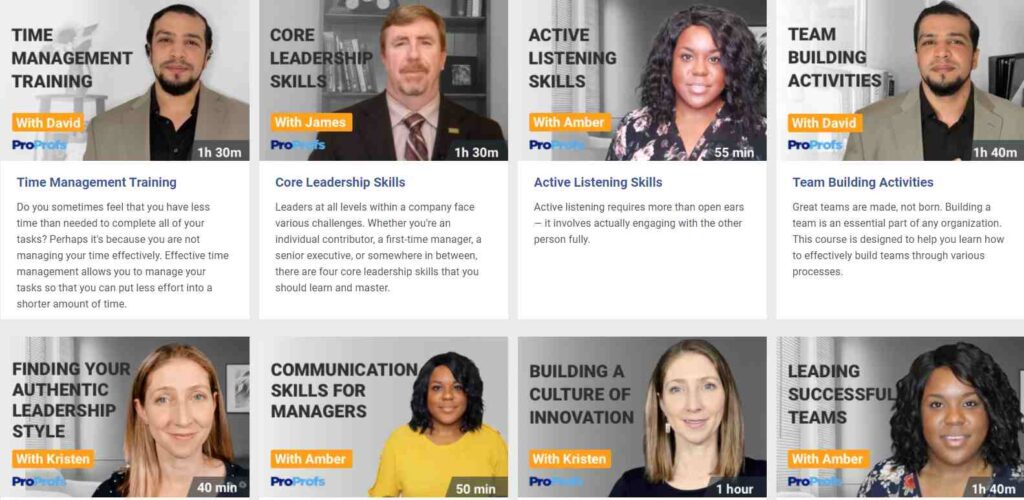
Productivity
Productivity is another area where adult learners, like all other employees, want to focus. Their career growth is closely tied to their job performance and productivity. So, they will more than welcome training sessions on this topic.
These courses will help them cultivate productive habits, increase efficiency, and minimize wastage.
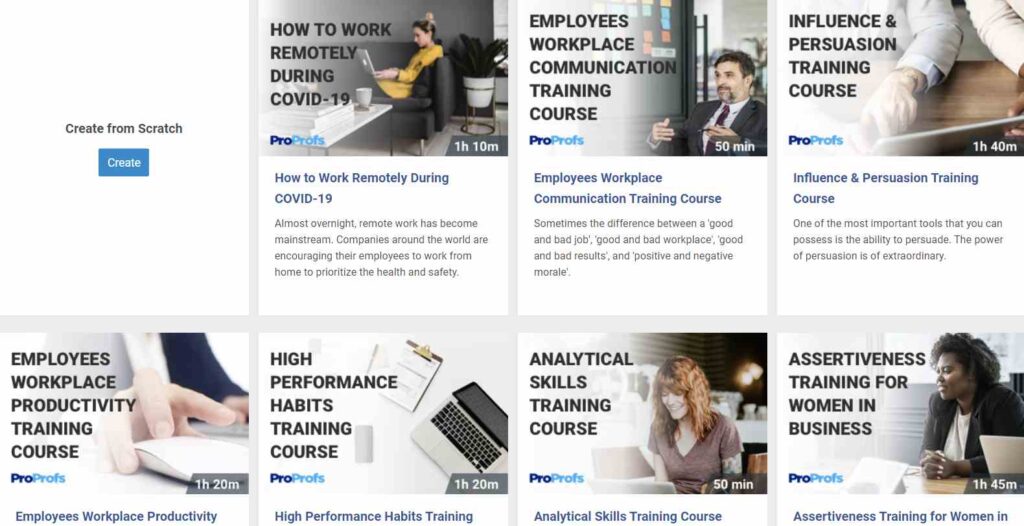
Get Free eLearning Authoring Software — All Features, Forever.
We've helped 567 companies train 200,000+ employees. Create courses in under a minute with our AI LMS or use 200+ ready-made courses on compliance, harassment, DEI, onboarding, and more!
6 Best Practices for Adult Learning
Before we wrap up, let’s quickly go through some of the best practices for teaching working adults. They will make learning more engaging, impactful, and sustainable while bringing the best results.
Make It Relevant
https://giphy.com/gifs/sjmTGtueluNz45XpPq
Adult learners are more interested in the real challenges they face every day. So, as already mentioned above, the training should be issue-based, not just content-based. It should communicate the real-world benefits of learning.
The idea is to help them apply learning to their day-to-day life. They should easily find the relevancy of learning to their work and personal development goals.
Consider Their Experience
Unlike children, adult learners come with some work and life experience. Therefore, your training should build upon those experiences and what they expect from learning. This will make learning more meaningful and beneficial to them.
Here, a pre-training assessment can help you understand their experience level, including technical skills, and what they still need to learn.
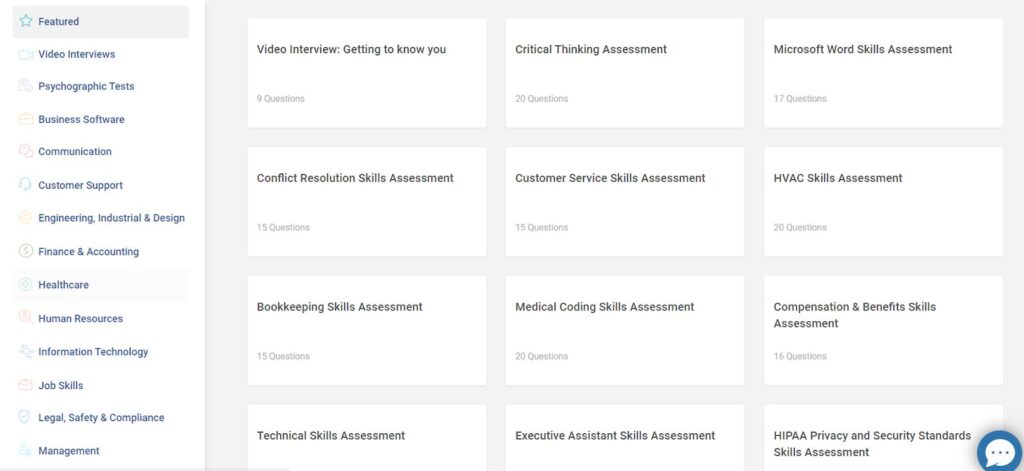
Give Activity-Based Assignments
Adult learners don’t have the patience to sit through and listen to classroom lectures. They prefer to involve themselves in active learning based on activities, explorations, and decision-making.
That’s why you should pose questions or share realistic workplace problems for them to find an answer or solution. This will make learning more effective and useful to them.
Break Information Into Small Modules
Break up a topic into smaller units for easy comprehension and to avoid cognitive overload. This will shift the learners’ focus to mastering each subtopic from merely finishing them.
You can add side notes and points as a summary so that learners can review them before moving to the next topic.
Engage Them With Conversations
Unidirectional learning no longer works for any learners, including adult learners. Instead, it should be two-way traffic based on discussions and collaborations. They should be able to connect with their peers and instructors through conversations and questions.
This will enable them to clarify doubts, learn from others, and correct mistakes. An online Q&A-based platform or community of learners can be useful here.
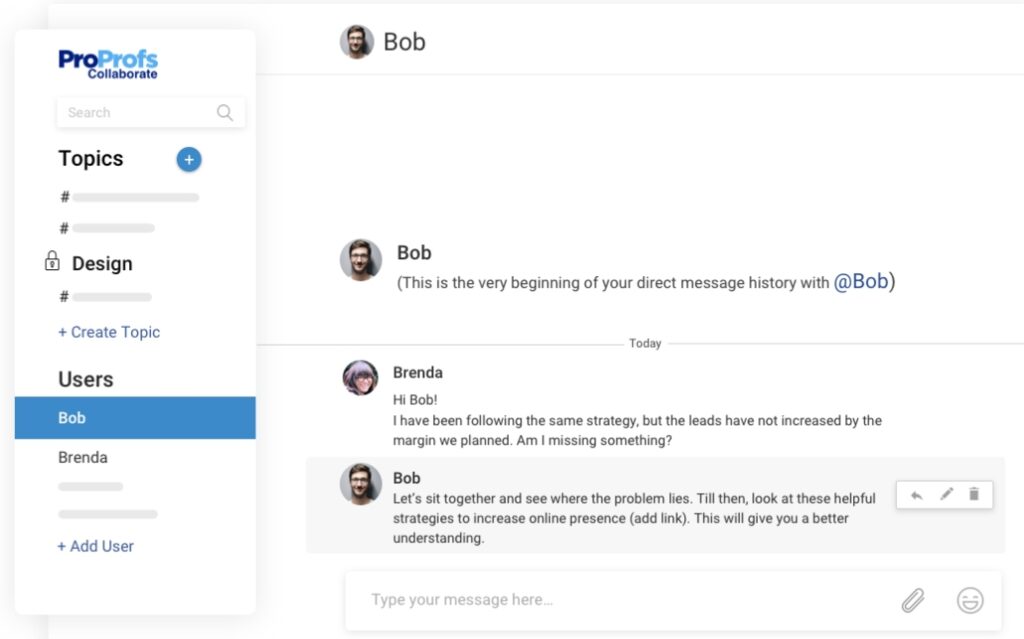
Keep Room for Feedback
Adult learners want feedback on their performance in coursework. Similarly, as a training manager, you need to know about the quality of your courses and instructors.
While creating your online courses, you should include surveys on these areas. This will enable you to know what works and what doesn’t in your training and the room for improvement.
By gathering information this way, you streamline the way you present your course content, choose the best instructors, and let learners learn optimally.
An instant feedback system such as online surveys can help you here. Using these tools, you can create custom online surveys. They usually provide different survey templates and question types.
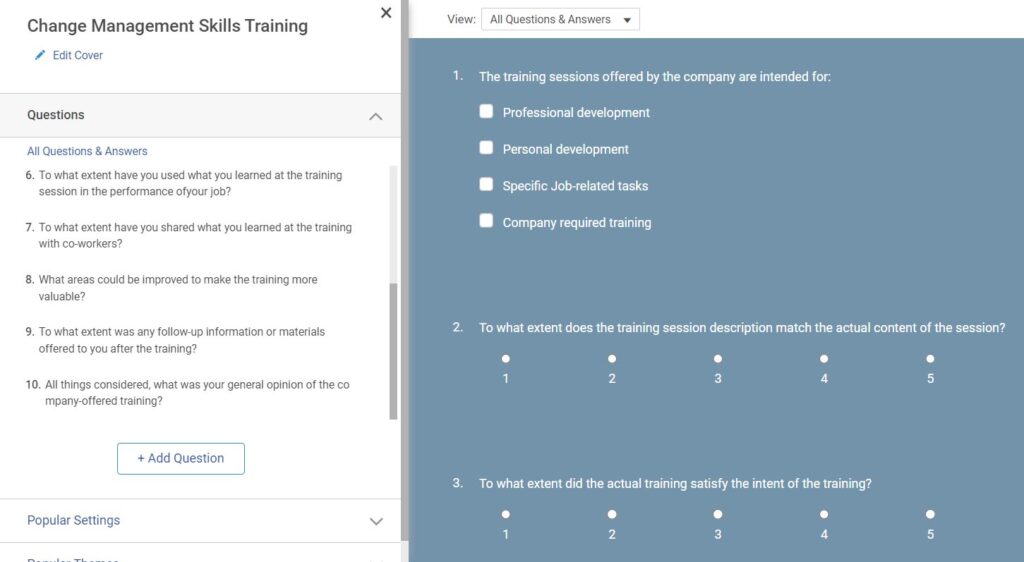
Make the Most of Adult Learning Theory in Corporate Settings
Adult learning theory is an insightful theory that proves useful in delivering the best learning experiences to working adults. You can calibrate your training materials, approaches, and methods based on the theory, let learners acquire knowledge and skills just the way they prefer and get positive outcomes.
Along with an LMS and selected courses, you can implement the best practices to see adult learning theory in action.
- Make the training relevant
- Take experiences into account
- Focus on activity & problem-based learning
- Use smaller course modules
- Promote conversations & collaborative learning
- Take & share feedback
For this, you first need to understand the challenges adult learners face in learning. This will enable you to fully apply the four principles we saw above and develop effective adult learning models.
Deliver the best version of adult employee training, help them meet their learning goals, and reap business benefits through a trained and productive workforce. All you need are the right strategies and tools like Pro Profs LMS to make all of this possible.
With its easy-to-use interface for learners of all types, availability of readymade resources, robust assessment and reporting features, you can do all that’s required to make adult learning a breeze.
 Tips
Tips
We’d love to hear your tips & suggestions on this article!
Get Free eLearning Authoring Software — All Features, Forever.
We've helped 567 companies train 200,000+ employees. Create courses in under a minute with our AI LMS or use 200+ ready-made courses on compliance, harassment, DEI, onboarding, and more!

 We'd love your feedback!
We'd love your feedback! Thanks for your feedback!
Thanks for your feedback!







